Complete Solutions to SECTION II of chapter MODEL TEST PAPER 1 of Class 7 book with complete answers and questions
| Class 7 | PHYSICS |
| Chapter | MODEL TEST PAPER 1 |
| OXFORD SCHOOL EDUCATION | SECTION II |
| Number Of Questions | 43 |
| Academic Year | 2023-24 |
How do fundamental quantities differ from derived physical quantities?
View SolutionInitial volume of water in a jar is 75 ml. A stone of 13 `cm^3` is lowered into the jar with a thread. What would be the final level of water in the jar?
View SolutionObserve the figure and answer the question

Calculate the volume of the rectangular block shown.
View SolutionObserve the figure and answer the question
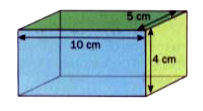
If the block has a mass of 500 g, what is the density?
View SolutionObserve the figure and answer the question
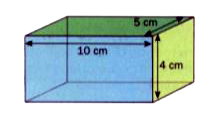
If the block is made of lead with a density of 11.3 g/`cm^3`, what will be its mass?
View SolutionSI unit of speed
View SolutionConvert 36 m/s into km/h.
View SolutionWhat kind of motion does the plucked string of a guitar represent?
View SolutionWhich of the following is vector quantity-speed, force, area or volume.
View SolutionA man jogs at a uniform speed of 10 km/h. How much distance will he cover in 30 min?
View SolutionWhen is a body said to be in uniform motion?
View SolutionDefine the term weight and state its S.I. unit.
View SolutionWhat is the principle on which a spring balance works?
View SolutionThe weight of a person in moon is only 1/6 of that on the Earth. Give reason.
View SolutionDefine the term energy and state its S.I. unit
View SolutionWhat kind of energy do fuels such as coal, petrol, dry wood, and batteries release on burning?
View SolutionIf an elephant and a bull are running with the same speed, which one will have more kinetic energy? Give reasons for your answer
View SolutionLook at the figure of a ball resting on top of a wall. At A, it's energy is 50 J. It falls down, at B its PE is 30 J.

Write the value of PE and KE at point A.
View SolutionLook at the figure of a ball resting on top of a wall. At A, it's energy is 50 J. It falls down, at B its PE is 30 J.

What is the KE at the point B.
View SolutionLook at the figure of a ball resting on top of a wall. At A, it's energy is 50 J. It falls down, at B its PE is 30 J.

What kind of energy does the ball have just before touching the ground? What is the value of this energy?
View SolutionLook at the figure of a ball resting on top of a wall. At A, it's energy is 50 J. It falls down, at B its PE is 30 J.
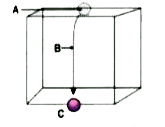
What will be the total energy at point C?
View SolutionLook at the figure of a ball resting on top of a wall. At A, it's energy is 50 J. It falls down, at B its PE is 30 J.
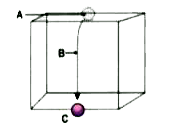
Which law helped us to calculate the energies above?
View SolutionState the two laws of reflection.
View SolutionIf the angle of incidence is `32^@`, then what will the angle between incident ray and reflected ray?
View SolutionDistinguish between Regular and diffused reflection .
View SolutionName two devices that use plane mirrors.
View SolutionName secondary colours of light? How are they formed?
View SolutionHow is melting different from solidification?
View SolutionWhat kind of phase change do mothballs go through when they are kept in a cupboard?
View SolutionThe temperature of an object is `80^@`F. What will be its temperature in `""^@C`?
View SolutionName the mode of transfer of heat in the liquid
View SolutionName the mode of transfer of heat in the vacuum
View SolutionThe bottom of a cooking utensil is painted black. Give the reason.
View SolutionLook at the figure and answer the questions
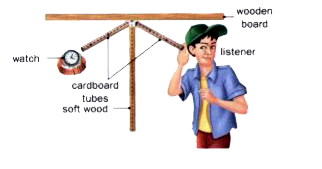
What would happen if instead of the wooden board a soft fluffy cloth was kept?
View SolutionLook at the figure and answer the questions

When is the ticking sound loudest? Which law is applicable here?
View SolutionDefine the term amplitude of a wave. Write its S.I. unit.
View SolutionDefine amplitude of a vibrating body. What is its SI unit?
View SolutionWhat is the frequency of a body that produces 50 vibrations in two seconds?
View SolutionHow is a primary cell different from a secondary cell?
View SolutionWhat are bad conductors of electricity?
View SolutionName any two bad conductors of electricity .
View SolutionThere are two circuits given below:
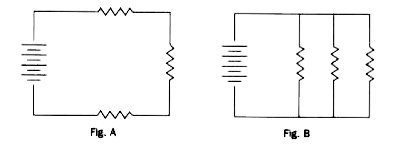
Name the kind of circuits in Figure A and B .
View SolutionThere are two circuits given below:
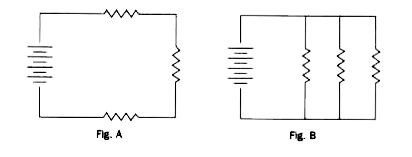
Write two differences between the two circuits.
View Solution
SECTION II questions and complete solutions for chapter MODEL TEST PAPER 1 of ICSE of Class 7